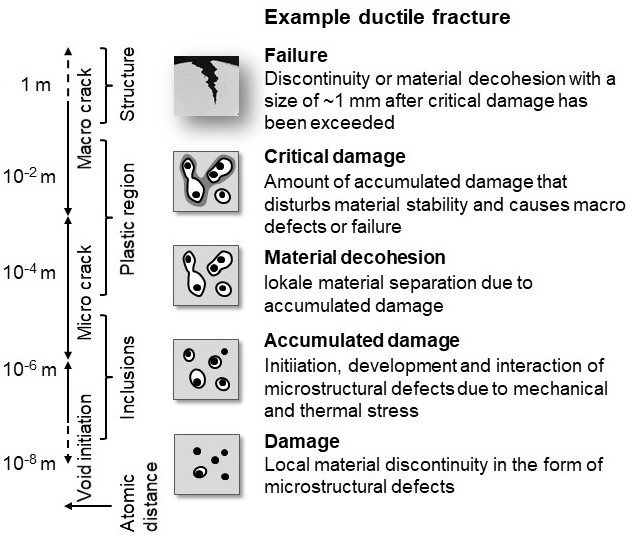Ductile damage is decisive for forming processes. According to the current state of research, it is defined as a local microstructure degradation located parallel on different scales depending on the respective material, its structure, and the stress conditions. Even in the initial state materials show pre-damage, e.g. in the form of casting pores and non-metallic inclusions. During the forming process further microvoids develop in the structure due to the plastic deformation, which damages the material additionally. A further plastic deformation can lead to the growth of voids up to local material decohesion. When a critical damage, i.e. global material decohesion, is reached, macrocracks occur and the component fails. As long as the damage is below the critical damage margin, there is no failure though. The components are evaluated as "good part". However, this damage could have a negative effect on the fatigue strength (static, dynamic, and cyclical strength) of the component during use. The microstructural damage caused during the forming process induces initial defects, which can lead to short and longitudinal cracks with increasing numbers of load cycles.

Course of ductile damage
The underlying mechanisms of ductile damage and the course of damage extend over the scales shown in the figure. The description of the individual phenomena depends significantly on the scale under consideration. As a result, the different disciplines use different models. However, all ideas have in common that the occurrence of a crack as well as the failure are the result of the coalescence of previously formed voids in the material.






